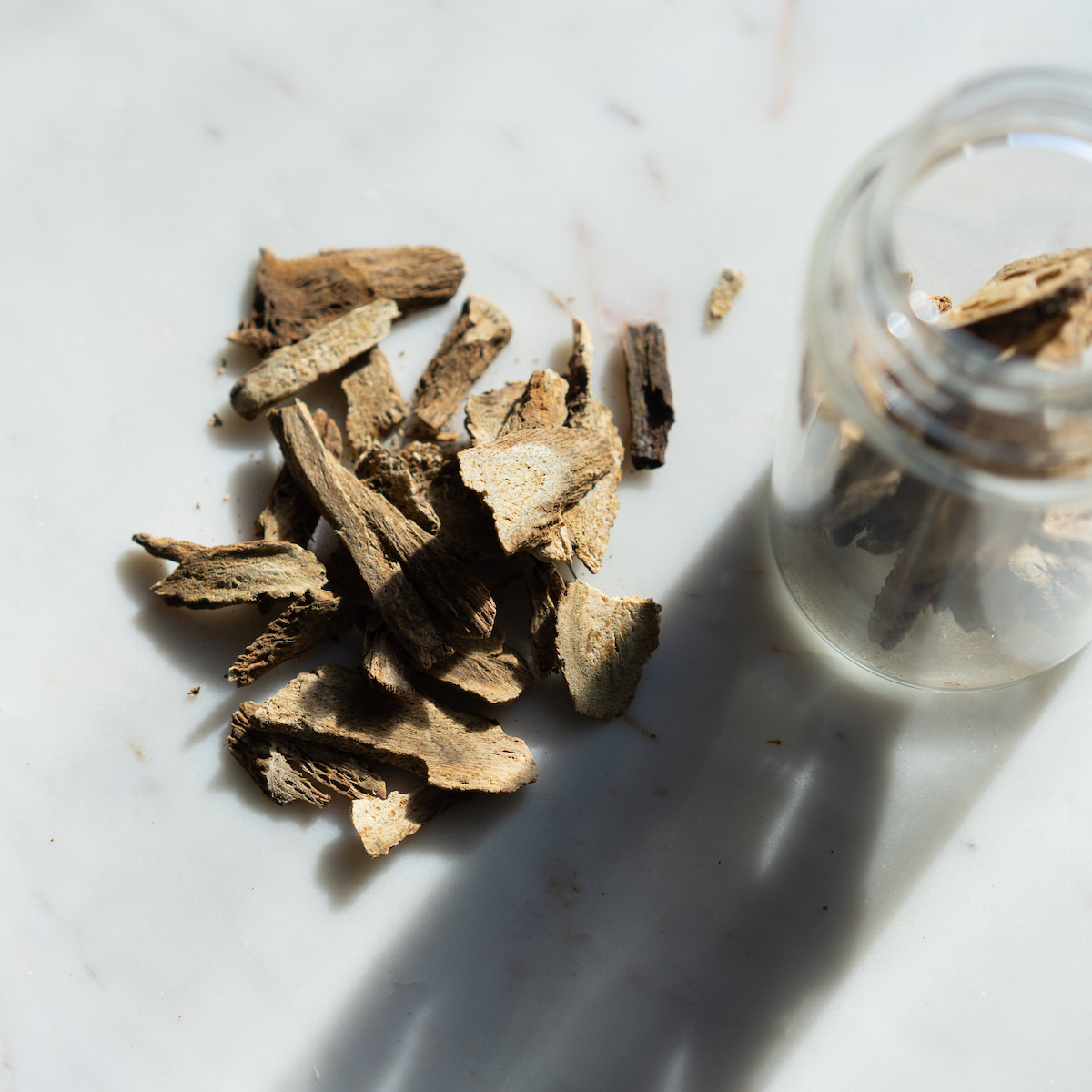
COMMON NAME (Chinese Name)
Aucklandia Root (Mu Xiang)
BOTANICAL NAME
Radix Aucklandiae
USES
Radix Aucklandia, also known as costus, refers to Saussurea’s roots or Aucklandia lappa in Traditional Chinese Medicine. The main bioactive compound in the root of Radix Aucklandia is its sesquiterpenes (Costunolide and dehydrocostus lactone) which help to relieve gastrointestinal complications. It regulates motility by acting as a spasmolytic agent, probably inhibiting the muscarinic receptors, serotonergic receptors, and calcium influx in the gastrointestinal tract. It also contains other compounds, including alpha-longifolene, cynaropicrin, alpha-ionone, alpha-phellandrene, alpha-caryophyllene, and beta-sesquiphellandrene.
In Chinese medicine, Mu xiang is classified as a qi regulator, that is warm, acrid and bitter. It is widely applicable in stopping stagnation in the GI tract, affecting the Stomach, Spleen, Large Intestine, Gall Bladder and San Jiao meridians (the latter referring to metabolic function.)
Mu Xiang prevents the risk of inflammation via inhibiting the pro-inflammatory mediators in the body. It also acts as an anticancer agent by arresting cells’ growth, inhibiting proliferation, and inducing apoptosis in cancerous cells. Moreover, it reduces the risk of hepatitis and jaundice by suppressing the expression of hepatitis B surface antigen (HBsAg) and induce the hepatoprotective effect. Aucklandia is formulated in combination with Semen arecae, Radix linderae, and Aurantii fructus to treat gastrointestinal complications, including bloating, diarrhea, abdominal pain, impaired motility, etc.
Radix Aucklandia not only improves gastrointestinal motility but also protects the gastric mucosa against ulcer and pathological agents. It treats ulcers via accelerating gastric emptying and increasing the release of endogenous motilin, inhibiting stress-induced ulcers, and showing antibacterial action against Helicobacter pylori to prevent gastric ulcers. Moreover, it relieves asthma and bronchitis via its spasmolytic effect on the smooth and tracheal muscles.
Studies have also reported hypolipidemic and hypoglycaemic effects of radix Aucklandia. It effectively manages high serum triglycerides, sugar, and cholesterol levels in the body. Also, show antimicrobial and antiparasitic activity against nematode infections, Clonorchis Sinensis, Streptococcus strains, and Trypanosoma cruzi. Moreover, after processing with different solvents and compounds, the roots can be used to treat headache, sneezing, throat infection, skin rashes, epilepsy, arthritis, fatigue, general weakness, restore hair growth, show immunomodulation, and improve urination.
PREPARATION & ADMINISTRATION
Radix Aucklandia is prepared for oral administration in powder, decoction, and pills (capsule). The decoction is usually prepared in warm water. It can be mixed with oil for topical application on joints and muscles. Studies also reported that root could be chewed for throat infection; a paste of root powder with roasting it in mustard oil can be applied to the stomach, mixed with milk/ghee and butter for topical use.
PRECAUTIONS
Studies have reported certain side effects, including gastrointestinal discomfort, skin rashes, pruritis, restlessness, and watery diarrhoea. It should not be used during severe medical conditions, have known hypersensitivity or allergy to it. Also, avoid its use during pregnancy or breastfeeding. Mu xiang should be avoided by dehydrated, yin deficient people. Don’t exceed the recommended doses. Always consult a certified herbalist or physician before consuming Radix Aucklandia
REFERENCES
